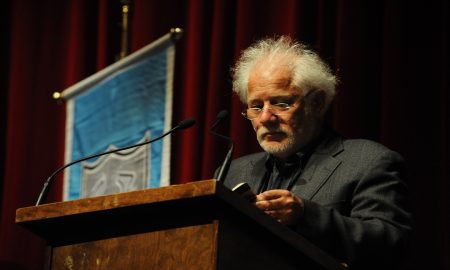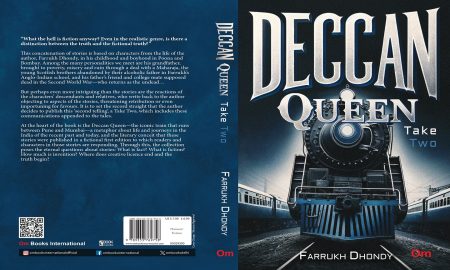Anne is working on the daunting task of packing her whole house, selecting what to give away, what to put into storage for when things turn around, and what to take to the tiny apartment that will be, for now, her new home. It is all “for now” at this point, and I realize I’m avoiding my own work of sorting my life by helping Anne with hers. I arrive at her house almost every day and, no matter how I prepare myself, I am unsettled.
I had not realized how intimately I’d grown to know this house and its things over our years of friendship. It is disconcerting to step through the front door and see the front hall empty while in my mind’s eye there is the small oak table, the white porcelain bowl of hard candies, and the faded prayer rug – the one her mother picked up at the dump back when the dump was a place you drove to and dumped your household discards on one heap and your garbage on another. As I walk through her house, I walk a path stripped of landmarks and repopulated by my memories. It is incalculably sad. Only by reminding myself that the sadness rightly belongs to Anne do I set it aside and return to my usual, efficient self.
Anne is not efficient. The date of the closing is set, and she needs to be out. It is as cruel and simple as that. It is obvious to me what she needs to do, and as obvious that she is ill equipped to do it. I, on the other hand, am equipped, and I work to get her to make decisions about the items she won’t possibly need in the next few months – a task made more difficult, not less, by the fact that many of her things have had absolutely no use, ever. To reinforce the choices that need to be made, I label boxes for things she’ll keep “storage,” and “apartment,” and label other boxes “give away.” I know that unpacking can be almost worse than packing, and I set up an inventory sheet for each “keeper” box to record its contents. But my influence is limited. When I return on another day, and sometimes when I simply return from another room, I find her method has reverted, and unlabeled boxes sit around partially filled with no lists in sight.
I recognize this as her general mode of packing. When she has an item in hand, she goes from box to box, looking for the best fit by size and shape. She calls this her jigsaw-puzzle method; I call it her personal expression of insanity. She will pay the piper, I tell her, when she unpacks these boxes. It will be a nightmare. She just laughs and sweeps her hand in a brushing motion to indicate that my ideas have no more substance than the dust bunnies collecting, undisturbed by any effort on her part, under the tables and even in the open corners of the rooms. It will be like a party when I unpack, she tells me, and her face takes on the expression of a child poised on the brink of delight, paused just before she can identify the gift she is opening. It is a discouraging moment for me. Until I saw that look, I had thought my efforts, which have been considerable, were saving her from the distress she would feel on unpacking these containers of chaos. But I briefly understand it will be a pleasure for her to unpack them. In this matter, we are not alike.
But revelations are often flimsy things, and true friendship demands persistence in attitude as well as effort: today I have set aside my reservations and arrived at the house resolved to redouble my efforts. I have index cards, and multi-colored markers, and stickers that say “fragile”. But she has come to a resolution of her own, and when I arrive, rather than calling, “Come in!” from another room, she meets me at the door. She takes my packages from me in a manner I have only ever seen in movies where a servant welcomes people by taking their coats and hats and umbrellas. I am disarmed, so to speak, and when she has accomplished this feat, she follows the movie script and says, “This way.”
At first glance, the dining room table looks like she must have gone around the house and gathered everything smaller than an apple and crowded the table with it. “What a mess,” she says for me, and I can only nod. “Watch this,” she instructs, and leads me to stand in front of a low stool. “Close your eyes, and sit down,” she insists and guides me to a safe landing on the stool. I am only too glad to close my eyes. My regret in coming here this morning is severe. “Fool,” I tell myself, “for thinking you could help her. You’ve only made her worse.”
I leave my eyes shut, determined not to open them, to make her tell me to. I hear her moving around the room, and then she says, “Okay, open them.”
The stool has put my eye level just higher than the table, and the crowd of small objects is a cacophony that makes me want to shut my eyes again. But then my eyes rest on an object, a little white rabbit, sitting up on its haunches. I have seen this object in Anne’s house many times before. It is Easter Bunny white, and anything beyond that, I see now, I have never noticed. It is, to my surprise, incredibly evocative of a living animal. The rabbit is alert, but not afraid, and I get the sense that this is a best moment in the life that is “rabbit,” a pause of rest and calm in a lifetime of dodging danger. I am tired from, and of, my attempt to help Anne, and I wouldn’t mind just gazing at the miniature statue for a while, but a bit of red catches my eye. As my glance travels of its own accord, it crosses what I recognize as a little pathway, and I follow that path in a zigzag from object to object. The bit of red is the cape of a miniature flower girl, and across from her is a two-inch high evergreen. I wander where my eye leads me. A two-dimensional silver cat sitting on a flat silver disk leads me to a little Lego girl dressed in orange and blue. Beyond her, a porcelain Scottie dog stands at the ready, suspiciously near a dollhouse plastic shrub. A miniature snow globe offers a view of a snowman with its top hat and outstretched stick arms. I sit up straighter to see further down the path. A shot glass proclaiming Florida! and sporting a pink flamingo serves as the focal point that shoots the path into two directions. I stand, then lean over, my hands on my knees, and look. The table unfolds for me, a network of paths and relationships. Salt cellars as town squares; glass bowls and shot glasses as traffic corners; animals, human and otherwise, less territorial than part of their territory; bits of minerals and pretty, striated stones; candle sticks – blue glass and milk glass and silver plate – are street lamp posts reaching to the sky. I feel the smallest of smiles, in keeping with the scale of things, come to the corners of my mouth. Then my consciousness of my own smile dissolves into a moment of rest and calm. I recognize that I have taken my place in this game of statues. My legs and my arms, my torso, and head and feet and hands, are a finite number of planes and angles and lines all bearing relationships to the other figures of the tableau. (I particularly like the angle formed by my hands on my knees, the flatness of my feet, the roundness of my absurd head.) I recognize myself, the part I play. I am “friend,” as unnecessary as the Lego girl, as vital as the rabbit.
My eyes travel the roadways and I greet many half-known friends, the partial troupe of old-time rubber Snow White figurines from the bathroom windowsill, the gingerbread house ornament still bearing its slender hook, the glass deer with fawn that grazed on the tv stand for years. I am happy to see a pinecone that might have come from the tree in my front yard, and the stone turtle I gave Anne the first year we met. I take my time, and I know that Anne, steady as a flame in a closed room, will stand there with me, patient. The world has shifted, and we have time.
Photo by Brigitta Schneiter on Unsplash





